On the Road is a weekday feature spotlighting reader photo submissions.
From the exotic to the familiar, whether you’re traveling or in your own backyard, we would love to see the world through your eyes.
Wow, this itinerary has us all over the map. Africa on Monday with Albatrossity, Death Valley with BillinGlendaleCA on Tuesday, then on to the Alps with BigJimSlade for the rest of the week. Gosh, when you guys plan these trips, does no one think of the time zones???
Albatrossity
Back to Africa again this week, with some fine waterbirds and some boneheaded bliss!
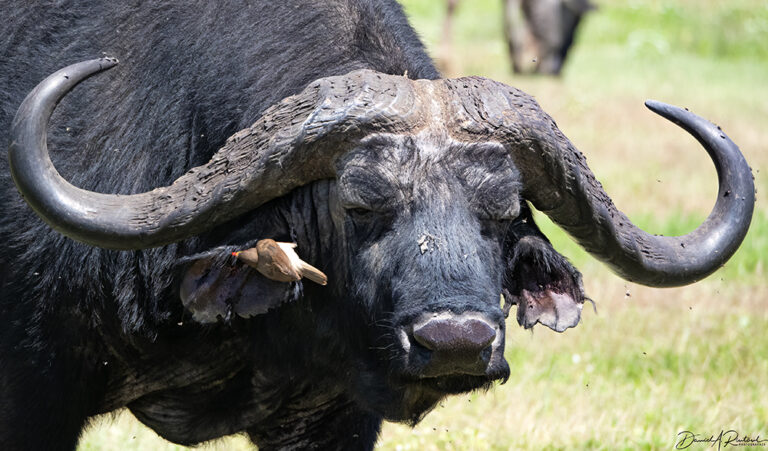
Here’s the bliss. Red-billed Oxpecker (Buphagus erythrorynchus) doing a splendid job removing ectoparasites from the ear of a Cape Buffalo. Win-win! Click here for larger image.
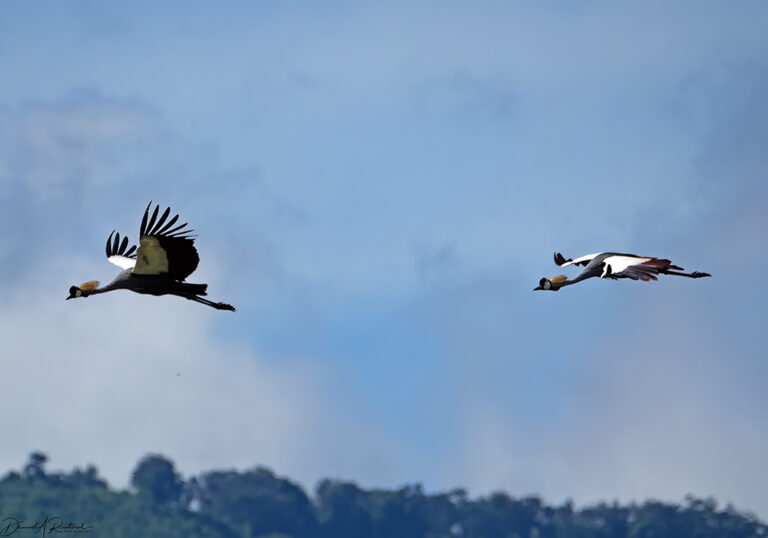
We saw plenty of Gray Crowned Cranes (Balearica regulorum) in the crater, and they are an incredibly photogenic species. Here’s a pair parachuting into a wet grassy area, bugling as they descended. I’d seen these guys in zoos several times (you probably have as well), but in the air, calling to each other, they are much more impressive. Click here for larger image.
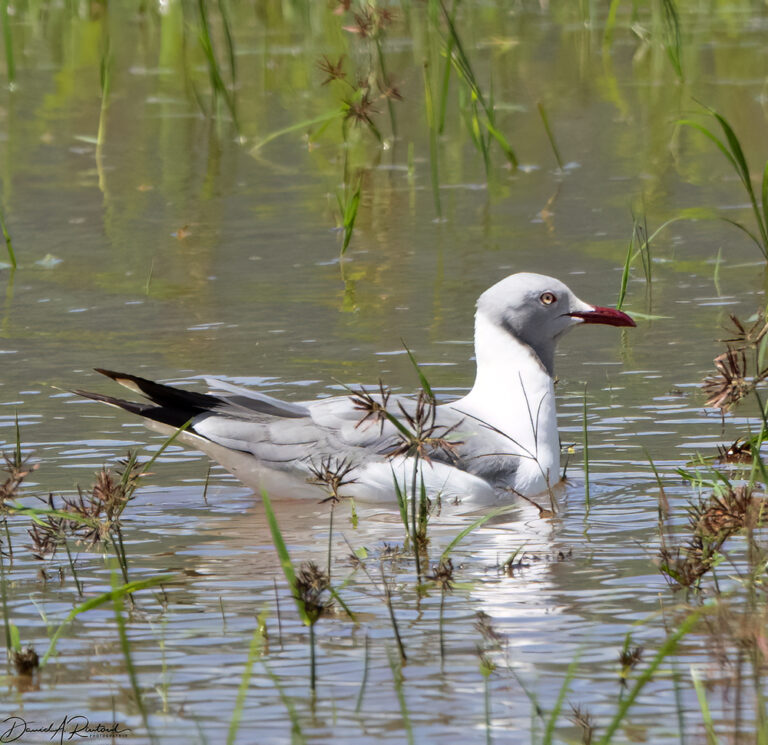
This was an unexpected sighting, a Gray-hooded Gull (Chroicocephalus cirrocephalus). A close relative of one of my favorite gulls, the Silver Gull/Red-billed Gull (Chroicocephalus novaehollandiae) of New Zealand and Australia (with whom it shares a bright red bill and a bright yellow eye), this species has an unusual distribution. It is found in Sub-Saharan Africa as well as along the eastern and western coasts of South America. Although there is probably not much (if any) gene flow between the African and South American populations, the genetic differences between those disjunct populations are apparently not significant enough to separate them into two different species. Click here for larger image.

In that same marsh we also saw this Whiskered Tern (Chlidonias hybrida), one of four members of genus Chlidonias. These are also known as Marsh Terns, since they live in freshwater marshes rather than along seacoasts. When I finally sighted the Black-fronted Tern (C. albostriatus) in New Zealand in 2019, I completed the Marsh Tern Grand Slam, having seen all four species. At least until some uppity taxonomist decides to mess with this genus again… Click here for larger image.
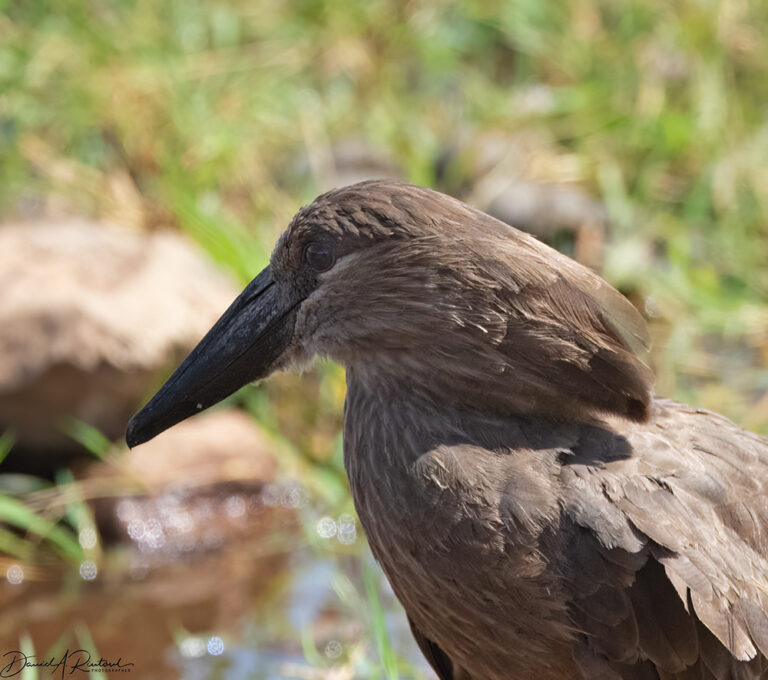
On the other side of the road from this marsh was a stream that was flowing swiftly and attracting lots of birds, like this Hamerkop (Scopus umbretta). Taxonomically this is an unusual species, as it is the only extant member of the genus Scopus and the family Scopidae. And it certainly looks unusual, with that massive bill and long brown crest. Both of those features undoubtedly contributed to the naming of this “hammerhead” bird. Click here for larger image.
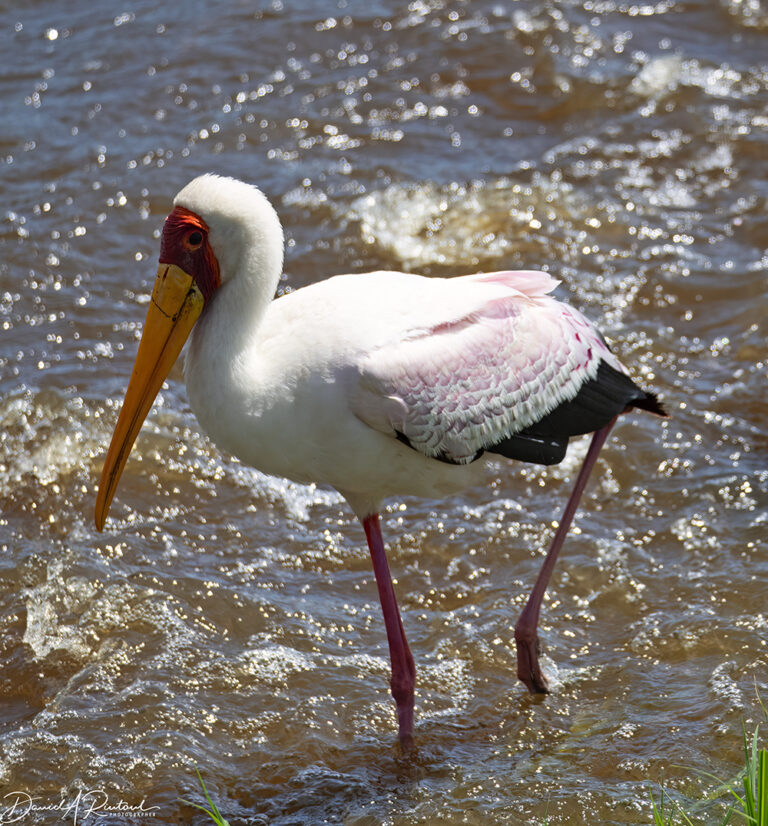
One of the most striking birds at this watering hole, the Yellow-billed Stork (Mycteria ibis) is widely distributed in Africa, and it is a gorgeous creature (especially for a stork!). Like its close relative, the Painted Stork (Mycteria leucocephala) of India and southeast Asia, it has pinkish tones during the breeding season, as well as a bright crimson face. Click here for larger image.
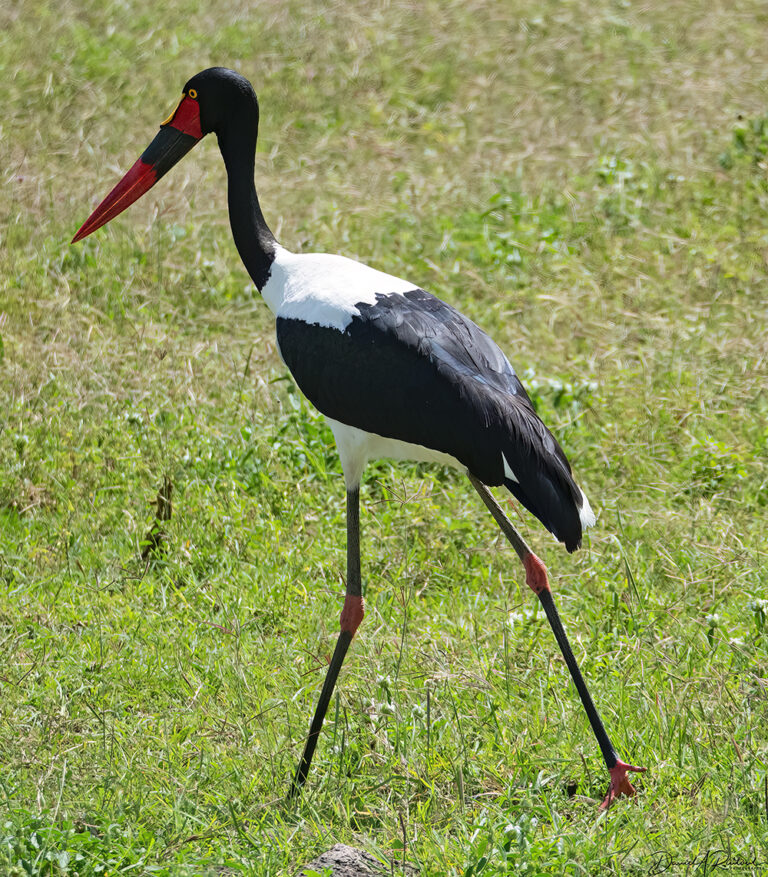
But an even more impressive stork stole the show that day. The Saddle-billed Stork (Ephippiorhynchus senegalensis) stands 1.5m in height (that’s nearly 5 ft in American), and sports a spectacular tricolored bill and flashing yellow eye. With hot-pink feet and ankle joints for extra credit! Click here for larger image.
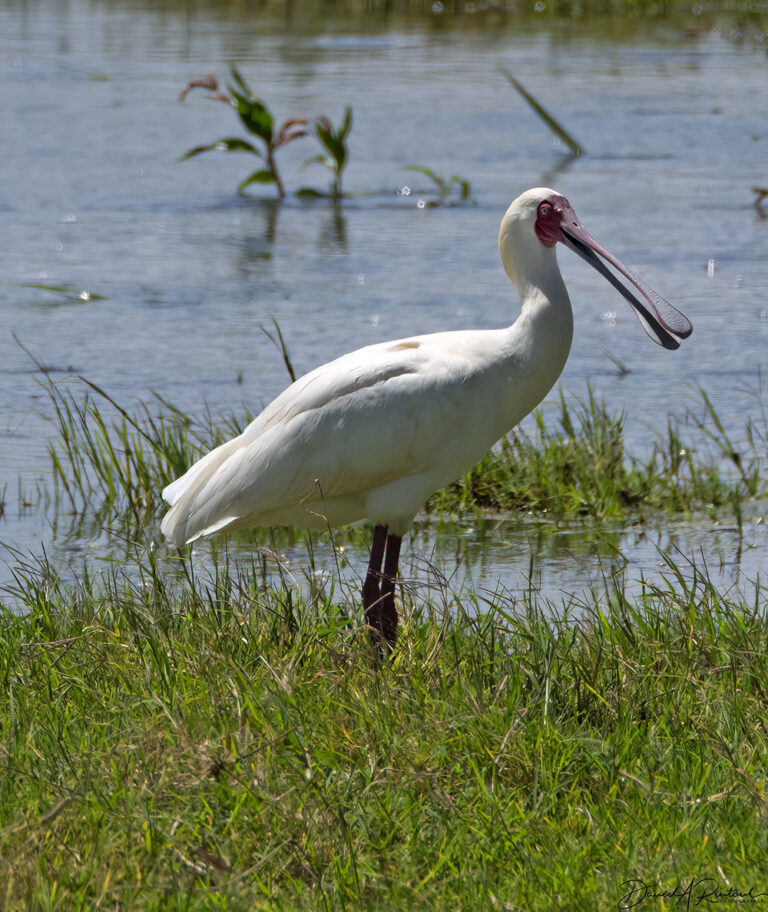
The African Spoonbill (Platalea alba) is not nearly as striking as the Saddle-billed Stork, but this was the only time we saw them, so yay! Another lifer! Worldwide there are 6 species of spoonbills, and I’ve only seen 3 of those. Must be time for a road trip. Click here for larger image.
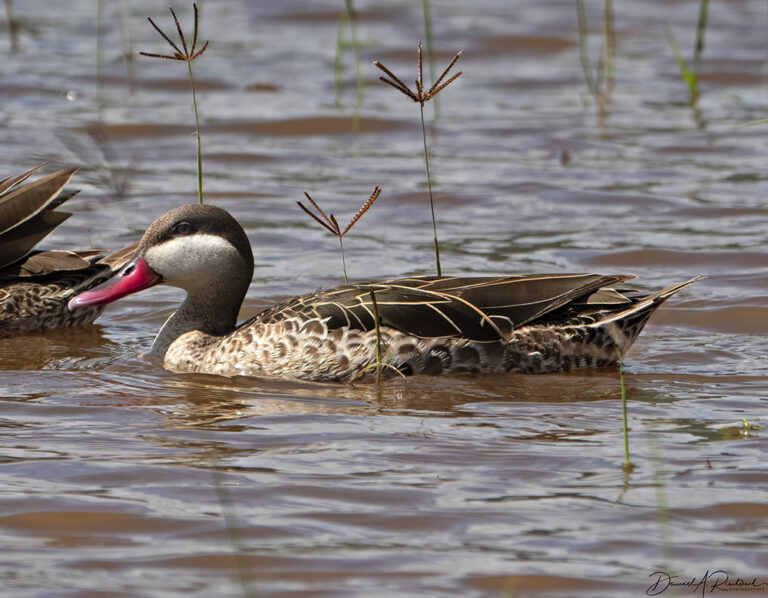
This pretty little duck is the cleverly-named Red-billed Duck (Anas erythrorhyncha), aka Red-billed Teal. Unlike many ducks, in this species the males and females have identical plumage, so we don’t know if this is a boy or a girl. Click here for larger image.
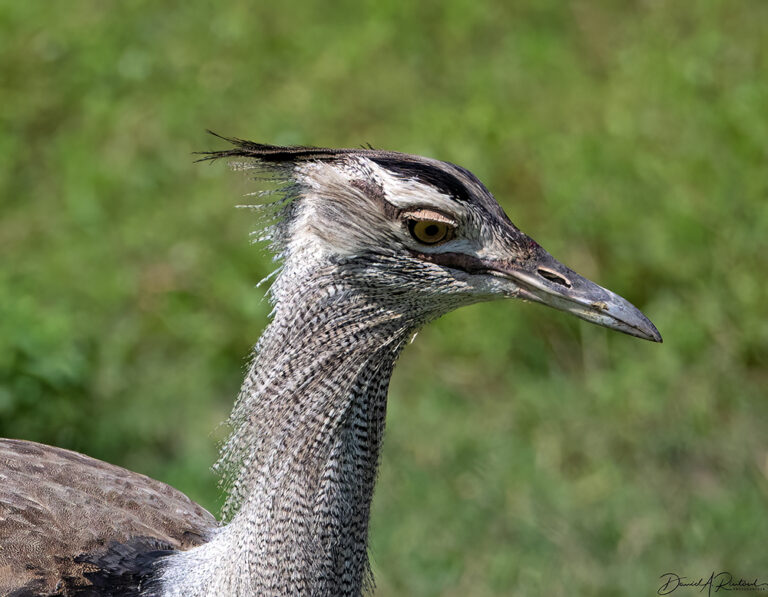
The final bird for today is one that was featured in On The Road a couple of weeks ago, the Kori Bustard (Ardeotis kori). That shot was at some distance; here’s a closeup so that you can appreciate this bird a bit more. Click here for larger image.

ryk
Awesome pics.
eclare
Amazing photos
Baud
Cool.
Benw
won’t anyone think of the parasites!? Lovely photos
currants
LOVE your photos–thank you! I always look forward to them and seldom comment but thank you (and of course Watergirl!) so much! I made one trip to Africa back in 2005 but had only a small digital camera, which died mid-safari and was unrevivable. Fortunately the folks we traveled with had cameras, but there is just not as much detail or range in the bird photos!
Betty
Magnificent collection. I think the cranes are my favorite.
tybee
the pics make me want to go there…thanks.
lashonharangue
Great photos! I saw a Kori Bustard there displaying to a circling female with his neck feathers all stuck out. The crater is such an amazing place.
Albatrossity
@Benw:
I’m pretty sure that the parasites can do just fine if nobody thinks about them!
pieceofpeace
Kori Bustard is getting a moment of fame – how unique and elegant looking! And the storks!
These are soothing and fascinating and lovely to begin the morning…
Madeleine
The saddle-billed stork: in addition to the color articulations mentioned, what about those knees!?!
mvr
Thanks!
I do think the Saddle Billed Stork is striking. And I like seeing the feather detail on the Kori Bustard.
StringOnAStick
The diversity in birds is awe inspiring, thank you!
Albatrossity
@Madeleine: Birds are different from you and me. That red bend in the middle of the leg is not a knee; it bends the wrong way! That is the ankle; the knee is hidden up under the body plumage. So that long stretch between the ankle and the toes is composed of the same bones that are in your foot – tarsals and metatarsals!
Madeleine
@Albatrossity: oops! Thanks.
Mike in Pasadena
Great pictures! Even my best bird book does not have them all.
BigJimSlade
A bird in the ear is worth 2 on the horns.
Beautiful tern in flight!
That spoonbill is a cartoon character that is freakin’ stoned!
Also, that knee-ankle thing is neat! Sounds like something Stephen Jay Gould would write about.
J R in WV
I think my favorite in this week’s birborama is the Cranes coming into the wetland. They are so complex in shape, it reminds me of some of the cutting edge aircraft like the SR-71 speed demon, or some of the more secretive Groom Lake aircraft. Such a weird build with the long neck etc, etc. We’re quite familiar with Sandhill cranes from a giant flock that winters in Cochise County, AZ, but today’s are way above the Sandhills in oddity factor!
Thanks for sharing your brilliant photography of birds, animals, plants, etc.
Yutsano
All I can think is that Hamerkop* is tired of this shit.
*I don’t know off the top of my head if Dutch capitalises nouns à la German but for now I’m sticking with it.